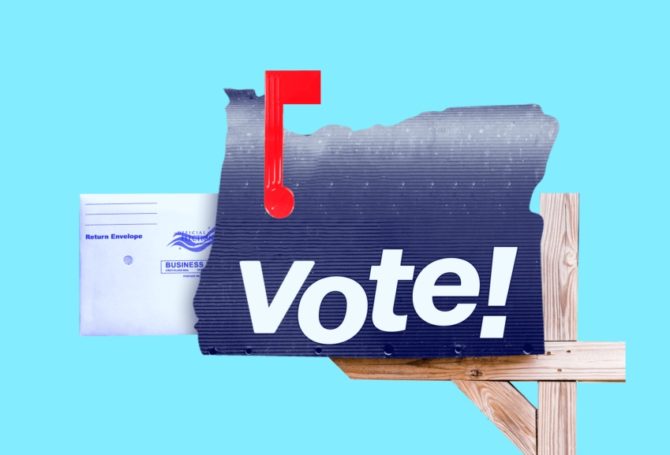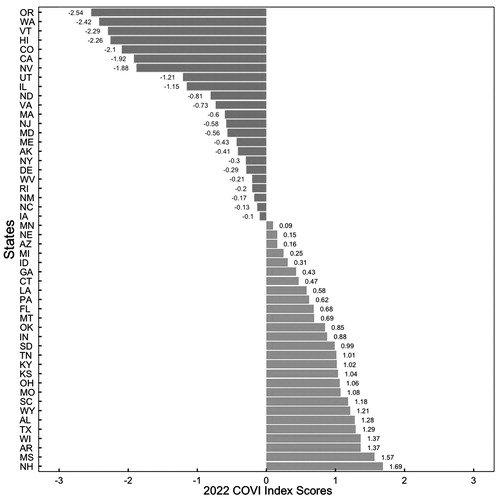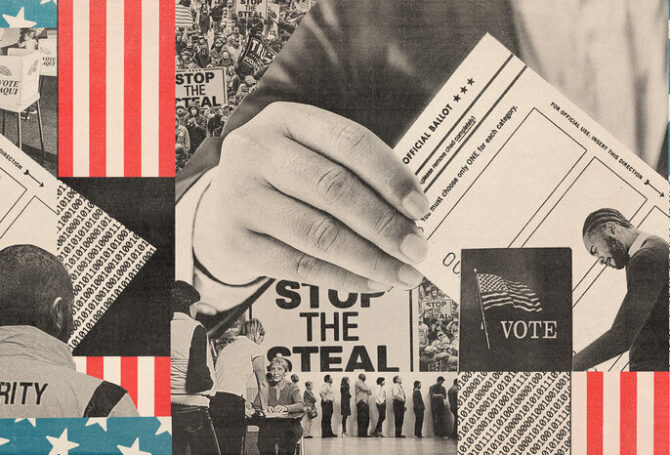
Eight States Now Have Vote-by-Mail Systems
Oregon ranks as the easiest state in America to register and to vote, and Washington ranks second behind Oregon for ease of voting, according to the 2022 edition of the nonpartisan Cost of Voting Index. The rankings are based on how much a voter must invest in time and resources to cast a ballot.
The two highest-leverage factors in the ranking were ease of registration and availability of early voting, either in person or by mail. Vote-by-mail states like Oregon and Washington fare well in that analysis. The eight states, mostly in the West, that have gone entirely to vote-by-mail elections were all in the top 10 of the ranking.
“The ability to vote by mail where you’re actually sent the ballot precludes the need to vote early, because everybody’s voting early, in effect,” says Dr. Scot Schraufnagel, a political scientist at Northern Illinois University and author of the ranking. “Anecdotally, I’ve got a friend in Oregon who has ribbed me about how ‘I got my ballot today, and the wife and I are sitting at the kitchen table, and we’re going to drop it in the mailbox.’ It makes voting really easy in those states.”
The Cost of Voting Index was launched in 2018 to assess and rank state voting systems and then applied to the 2020 and 2022 elections. The voting system analysis in 2022 followed a wave of new election laws throughout the country, many aimed at restricting early voting or tightening registration requirements, but some that expanded voting access.
For example, Vermont jumped from 23rd on the 2020 ranking to third in 2022 after adopting a statewide vote-by-mail system like Oregon’s. Wisconsin went in the opposite direction falling from 38th in 2020 to 47th in 2022 after requiring proof of residency in registering to vote and axing voting deputies who assist voter registration. Colorado moved up the rankings after adopting in 2020 a motor-voter registration system like what Oregon does and registering 350,000 new voters.
New categories were added to the 2022 election analysis, including limits on absentee voting, fewer drop boxes, bans on handing our water in voter lines and shortened vote-by-mail windows.
Conservative groups panned the rankings, claiming the author undervalues “election security” measures. Schraufnagel disputes the claim, arguing vote-by-mail elections are more secure because ballot signatures are matched and paper ballots can be examined for authenticity.
The voting system analysis in 2022 followed a wave of new election laws throughout the country, many aimed at restricting early voting or tightening registration requirements, but some that expanded voting access.
Schraufnagel says he has done an analysis comparing ease of voting to cases of voter fraud in each state, using the tracking database of the conservative Heritage Foundation. In nearly every state, he said, “there was either equal amounts of fraud before and after election changes, or it went the other way where New Hampshire restricted voting and actually saw more fraud.”
The Index doesn’t paint a black-and-white picture of voting. Florida, Georgia and Iowa received lower rankings in 2022 than 2020 after adopting restrictions but still have relative ease of voting, according to Schraufnagel. He noted Florida and Georgia still have early-voting periods and Iowa allows same-day voter registration.
Making voting easier doesn’t always translate into higher voter turnouts. A separate analysis showed New Hampshire, which ranked 50th in the latest Index, notched its seventh highest voter turnout in history in the 2020 election.





